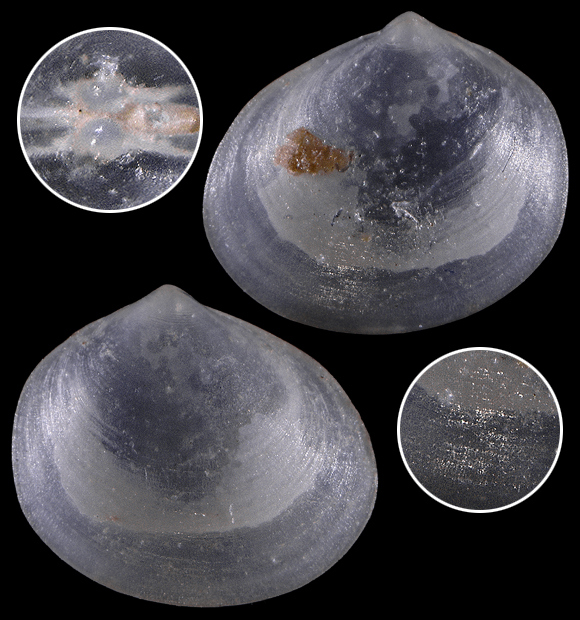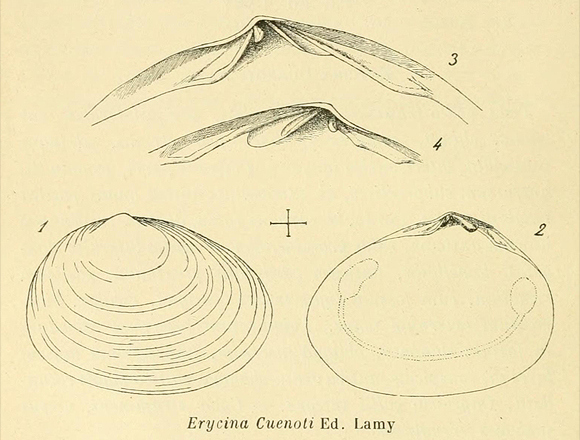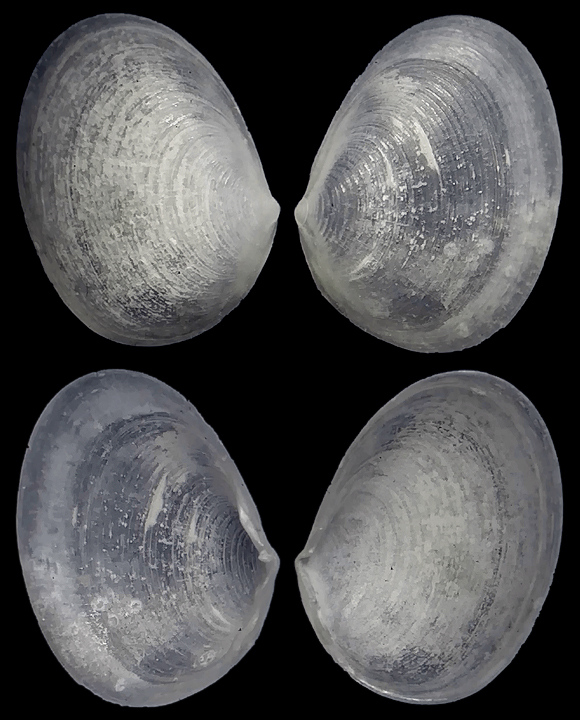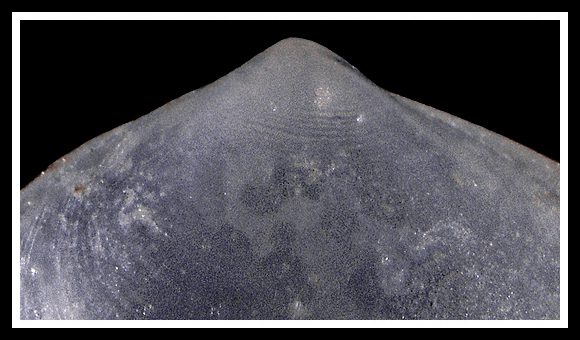(P. Fischer in de Folin & Périer, 1873)

Original taxon: Lepton glabrum. Synonym: cuenoti, perezi.
« Shell ovate, equivalve, inequilateral, brittle, whitish, partly transparent. Valves rather compressed, closed along all sides, some of them somewhat produced antero-ventrally. Beaks behind the middle; umbones orthogyrate, small, prominent; prodissoconch well marked, smooth. Margins smooth; dorsal margin below the umbones sinuous in the plane of the hinge plate, the other margins gently rounded; the anterior margin curved more strongly than the posterior margin. Lunule and estutcheon absent; neither nymphs nor external ligament could be detected. » – Hoeksema & al.: “On the identity and distribution of Litigiella glabra (P. Fischer, 1873) (Bivalvia Heterodonta: Lasaeidae)”, La Conchiglia vol. 27(275), 1995, p.17. Above: young specimen found in grit at 10m, Bodrum, Muğla Province, SW. Turkey. 2mm.

« Periostracum not observed. Each valve: hinge plate long; one narrow, protruding cardinal tooth and distinct single anterior and posterior lateral teeth; directly behind cardinal tooth a hollow and a resilifer, the latter oblong, directed inwards the valve, oblique to hinge plate. » – op. cit. p. 20. – Above: Erycina cuenoti in E. Lamy: “Description d’une coquille nouvelle de la côte atlantique française”, Journal de conchyliologie vol. 56 (1908-1909), Paris 1908, p. 36. – 1: right valve, external side. 2: right valve, inside, with ligament. 3: right valve, hinge, with ligament removed. 4: left valve, hinge, with ligament removed.

– (CC BY-NC-SA) –

Hoeksema & al.: « Sculpture of growth lines and fine concentric lines; many valves show irregular radiating striae. Adductor scars and pallial line rather distinct and irregular; pallial sinus absent. » Notice some stronger commarginal plicae near the dissoconch.